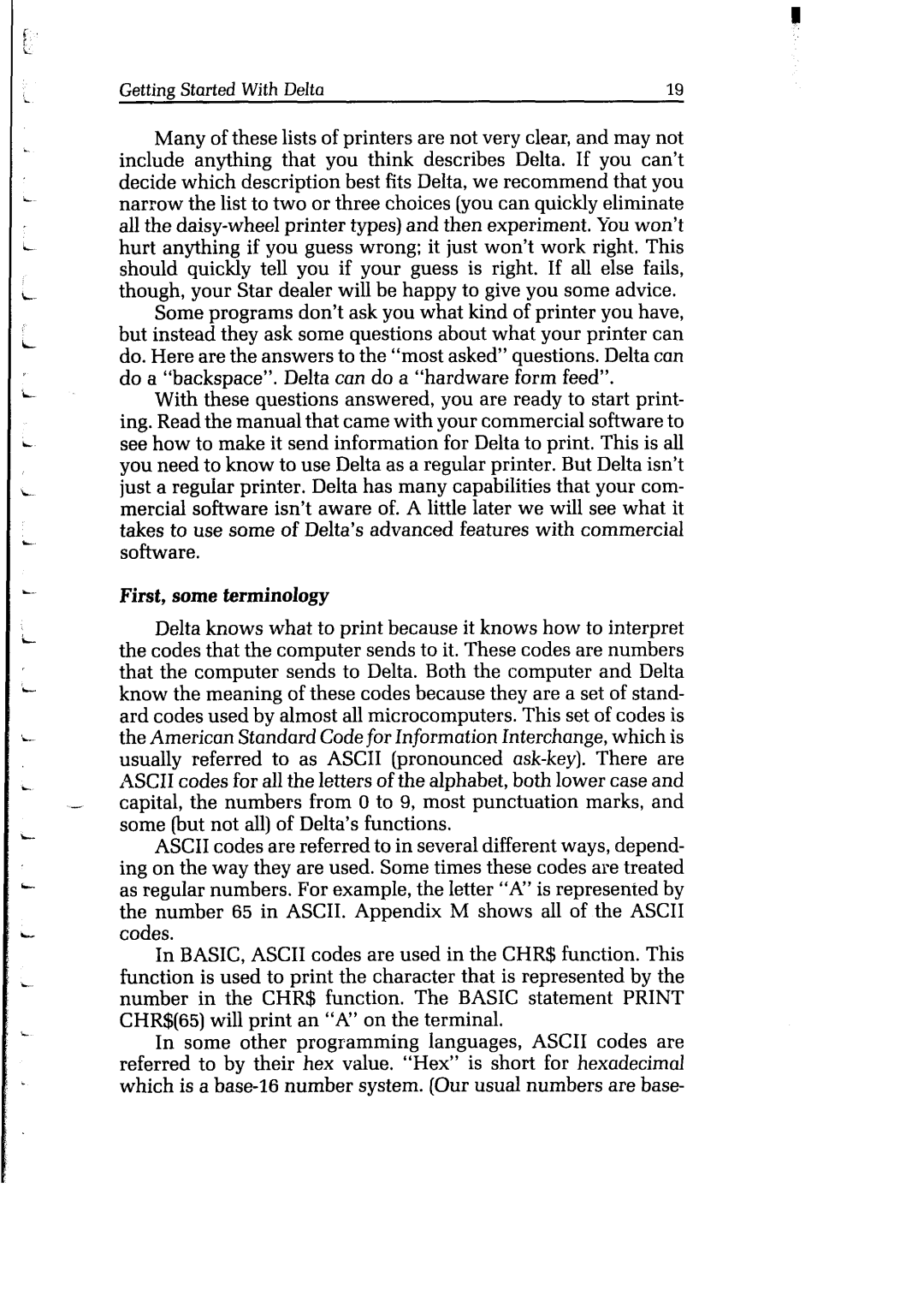
‘
Getting Started With Delta | 19 |
Many of these lists of printers are not very clear, and may not include anything that you think describes Delta. If you can’t decide which description best fits Delta, we recommend that you narrow the list to two or three choices (you can quickly eliminate ail the
Some programs don’t ask you what kind of printer you have, but instead they ask some questions about what your printer can do. Here are the answers to the “most asked” questions. Delta can do a “backspace”. Delta can do a “hardware form feed”.
With these questions answered, you are ready to start print- ing. Read the manual that came with your commercial software to see how to make it send information for Delta to print. This is ail you need to know to use Delta as a regular printer. But Delta isn’t just a regular printer. Delta has many capabilities that your com- mercial software isn’t aware of. A little later we will see what it takes to use some of Delta’s advanced features with commercial software.
First, some terminology
Delta knows what to print because it knows how to interpret the codes that the computer sends to it. These codes are numbers that the computer sends to Delta. Both the computer and Delta know the meaning of these codes because they are a set of stand- ard codes used by almost ail microcomputers. This set of codes is the American Standard Code for Information Interchange, which is usually referred to as ASCII (pronounced
ASCII codes are referred to in several different ways, depend- ing on the way they are used. Some times these codes are treated as regular numbers. For example, the letter “A” is represented by the number 65 in ASCII. Appendix M shows ail of the ASCII codes.
In BASIC, ASCII codes are used in the CHR$ function. This function is used to print the character that is represented by the number in the CHR$ function. The BASIC statement PRINT CHR$(65) will print an “A” on the terminal.
In some other programming languages, ASCII codes are referred to by their hex value. “Hex” is short for hexadecimal which is a
